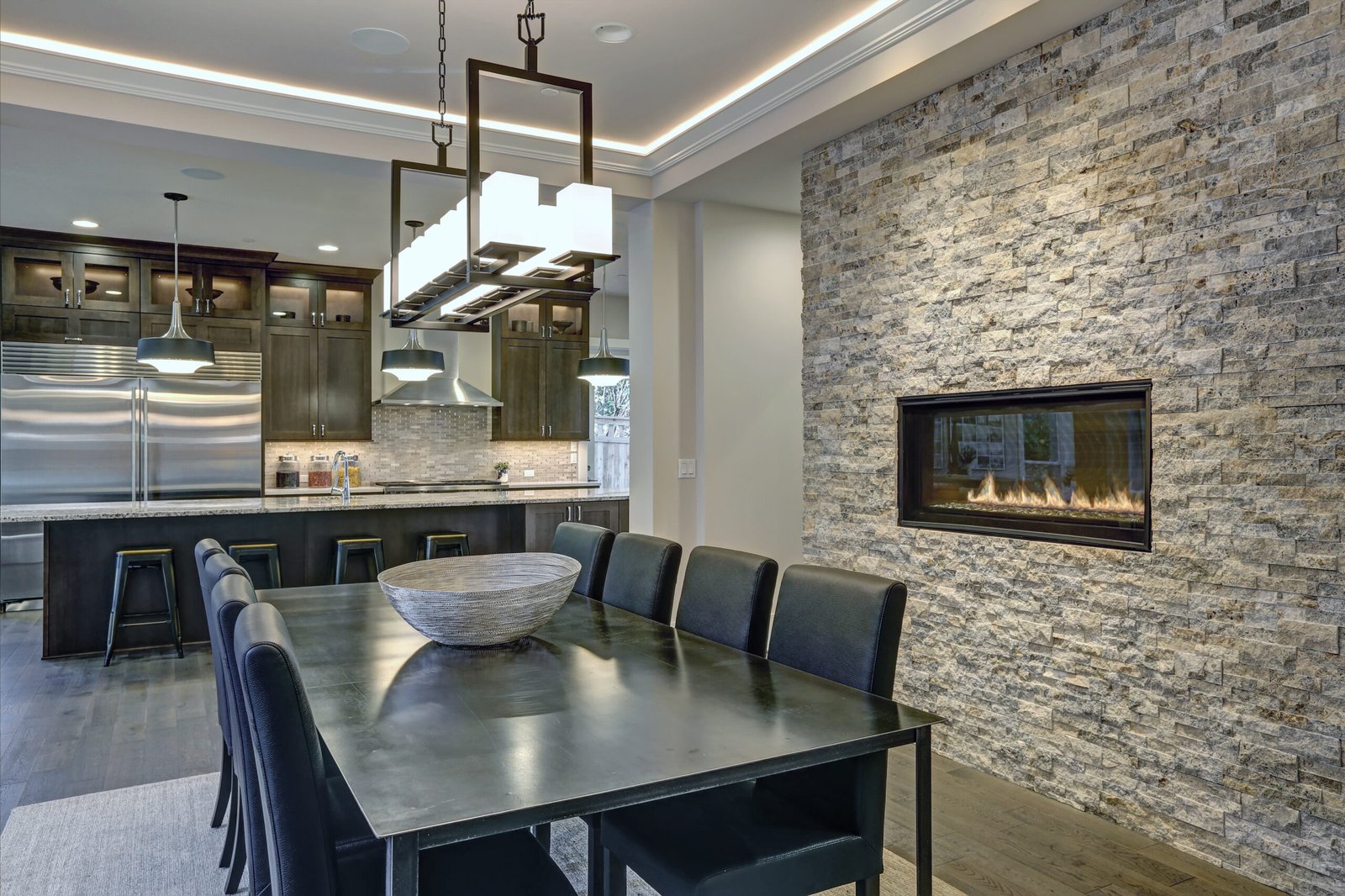Bar stools serve purposes beyond mere seats – they contribute to home and business decor. They influence style and comfort. Whether you intend to fix your home kitchen, repair a business bar, or keep your present furniture functional longer, knowing the details of replacing a bar stool seat matters.
This guide shows the main parts of picking and evaluating when doing a bar seat replacement. From locating the correct height to selecting good items and placing DIY features, you will get help determining the best choices for your chairs and bar stool- a vital task.
How Do You Choose A Bar or Counter Stool with the Right Height?
Selecting the appropriate bar stool height is essential to comfort, functionality, and ergonomic support. It is not merely a matter of eyeballing measurements—it is a process that considers a number of critical factors.
Measuring Counter and Bar Heights
Standard Counter Heights
- Kitchen counters: Typically, 36 inches high
- Recommended stool height: 24-26 inches
- Ideal seat height: Allows 10-12 inches between the seat and the counter surface
Bar Height Surfaces
- Bar counters: Usually 40-42 inches high
- Recommended stool height: 28-30 inches
- Proper clearance: 10-13 inches between the seat and the bar surface
Measurement Techniques
- Use a tape measure to determine the exact height of your counter or bar
- Measure from the floor to the top of the surface
- Subtract 10-12 inches to find the ideal seat height for comfortable seating.
- Consider the thickness of cushions when making final height selections
Commercial vs. Home Space Considerations
Commercial Spaces
- Prioritize durability and standardized measurements
- Choose seats that can withstand frequent use
- Opt for commercial-grade materials resistant to wear and tear
Home Spaces
- Allow more flexibility in design and personal comfort preferences
- Consider aesthetic integration with existing decor
- Focus on individual comfort and style
How to Make Bar Stools with Backs: DIY Support and Comfort Enhancement
Backs on bar stools can transform basic seating into comfortable, elegant, and supportive furniture. Here’s a step-by-step guide to implementing this enhancement.
Materials Needed
- Wooden or metal support bars
- Sturdy screws
- Electric drill
- Measuring tape
- Level
- Cushioning material
- Upholstery fabric
DIY Installation Steps
- Measure and mark precise attachment points
- Ensure the structural integrity of the existing stool frame
- Attach a supportive back using appropriate hardware
- Add cushioning for enhanced comfort
- Cover with coordinating upholstery
Professional Considerations
- Consult professional furniture makers for complex modifications
- Ensure that added backs maintain the original stool stability
- Consider weight limitations and structural requirements
How to Choose Good Living Room Bar Stools:
Stock Photo ID: 220857574
Selecting the furniture to complement your bar stools is a work of art that requires tactfully considering design, purpose, and visual harmony. If you do it well, a replacement chair seat can transform your living space into a well-planned, deliberate, and inviting room.
Color Coordination Methods
Match Primary Colors or Select Complementary Colors
Color harmony is the secret to creating a visually attractive living space that blends bar stools with the rest of your furniture. Begin by establishing the dominant color of your bar stools—whether it is the material of the frame, the cushion color, or the finish.
For a more sophisticated approach, consult the color wheel. Complementary colors, or colors directly opposite each other on the color wheel, create an intense and dramatic look.
Choose Neutral Colors for Easy Flexibility
Neutral colors offer maximum flexibility in styling and coordinating furniture. Beige, gray, white, and taupe colors offer a universal background that allows you to combine bar stools easily with any living room furniture. While styling with neutral colors, emphasize the depth of texture and slight variations in shade.
Use Accent Colors to Create Visual Interest
Accent colors are an excellent means of adding visual energy and leading the eye around your living room. Start with your bar stools to add accent colors to the room. If your bar stools feature a bold red cushion, add red accents in throw pillows, artwork, or accessories throughout the living room.
The secret is balance—attempt to put accent colors in a position that seems meaningful, but not overly done. The 60-30-10 rule is a great guideline: 60% of the space in a dominant neutral, 30% in a secondary color, and 10% in an accent color.
Material Synchronization
Coordinate Wood Finishes Wood finishes must be well planned to create a harmonious look on different pieces of furniture. Start by selecting the dominant wood tone of your bar stools—light maple, dark walnut, dark mahogany, or weathered oak. When choosing other furniture for the living room, match this or complementary wood tones to create visual interest.
Coordinate Metal Frame Designs
Metal frames also require the same careful coordination. Consider the finish of your bar stool frames—are they chrome, brass, brushed nickel, or matte black? These metal elements can become a design language that ties your living room together. A bar stool with black metal legs can create black metal accents on lamp bases, picture frames, or shelving.
Align Texture and Aesthetic
Texture is essential to the depth and interest of your living room’s style. Use the texture of your bar stool upholstery as a point of reference when choosing supporting furniture textures.
Functional Considerations
Ensure Furniture Performs the Same Use Patterns
Aside from looks, functional compatibility is crucial in selecting living room furniture to accompany bar stools. Consider the primary uses in your area—is it an entertainment area with high traffic, a reading area with low traffic, or a multi-purpose family room?
Bar stools evoke an active social area, so choose other furnishings that continue this energy. Modified or adaptable seating, like sectional sofas or rolling ottomans, will create a mobile space accommodating informal perching around the bar and extended lounging.
Consider Traffic Flow and Spatial Relationships
Good furniture design is not about individual pieces, but a whole spatial experience. Design a smart traffic flow in combining bar stools with living room furniture. Provide sufficient walking space between furniture pieces, typically 30-36 inches, to facilitate easy movement.
Balance Harmony of Design and Comfort
The result of selecting furniture is a room that looks great and feels comfortable. While design coordination is essential, never compromise on the look by sacrificing comfort. Inspect the ergonomics of the pieces of furniture you select to be supportive enough and encourage lounging.
Top Features for Bar Stool Replacement Seats
Selecting the right seat replacement involves evaluating critical factors that impact durability, comfort, and aesthetic appeal.
Material Selection Guide
Leather Seats
- Pros: Luxurious appearance, easy cleaning
- Cons: Higher cost, potential temperature sensitivity
Fabric Upholstery
- Pros: Wide design variety, soft texture
- Cons: More challenging to clean, potential staining
Vinyl Covers
- Pros: Budget-friendly, water-resistant
- Cons: Less breathable, potential wear over time
Memory Foam Padding
- Pros: Superior comfort, body-contouring support
- Cons: Higher price point, potential heat retention
Durability Factors
- Reinforced stitching
- High-density foam
- Stain-resistant treatments
- UV protection for colored materials
Comfort Enhancement Features
- Ergonomic contouring
- Shock-absorbing layers
- Breathable material construction
- Adjustable cushion thickness
Practical Insights for Seat Replacement
Cost Considerations
- Budget seat replacement options: $30-$100
- Mid-range replacements: $100-$250
- Premium custom seats: $250-$500
Installation Tips
- Measure existing seat dimensions precisely
- Check mounting hardware compatibility
- Consider professional installation for complex designs
Conclusion
Reupholstering your bar stools’ cushions is not just an improvement of furniture; it’s an investment in comfort, aesthetics, and functionality. With the skills of measurement, choosing the ideal fabric, and considering design aspects, you can turn ordinary chairs into a stunning masterpiece.
Whether you’re a homeowner looking to revive the look of your kitchen or a business owner aiming to improve your guests’ experience, the proper selection of seating can truly make the space. Take a few moments to consider your specific requirements, browse through the in-depth recommendations discussed below, and don’t hesitate to mix and match functionality with your flair. Chairs and stools can elevate your interior, blending comfort, style, and practicality in one perfect package.
Final Recommendations
- Prioritize comfort and durability
- Invest in quality materials
- Consider professional consultation for complex replacements
- Regularly maintain and inspect seat replacements
YOU MAY ALSO LIKE: How to Build a Sink Vanity Out of Wood











